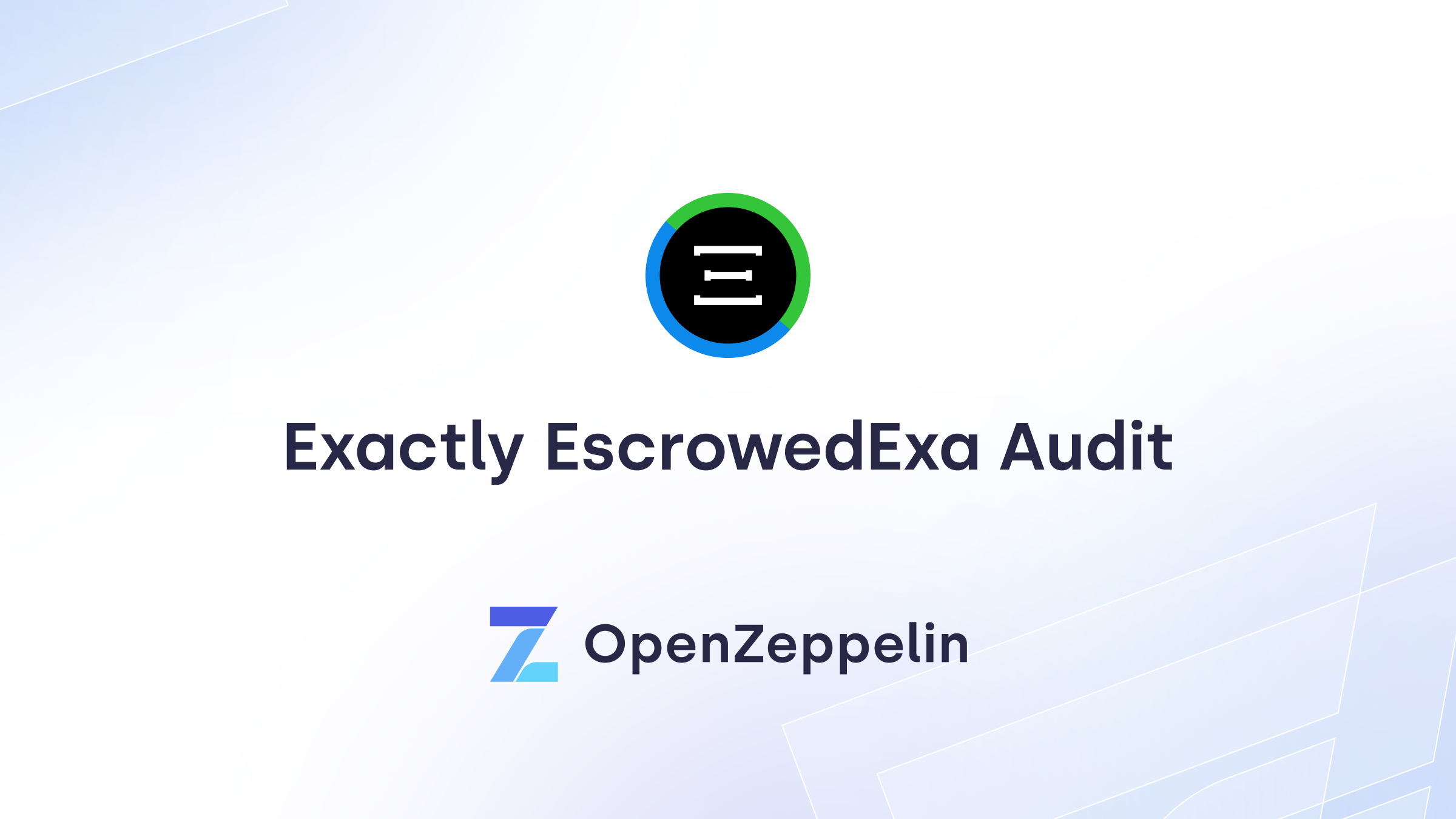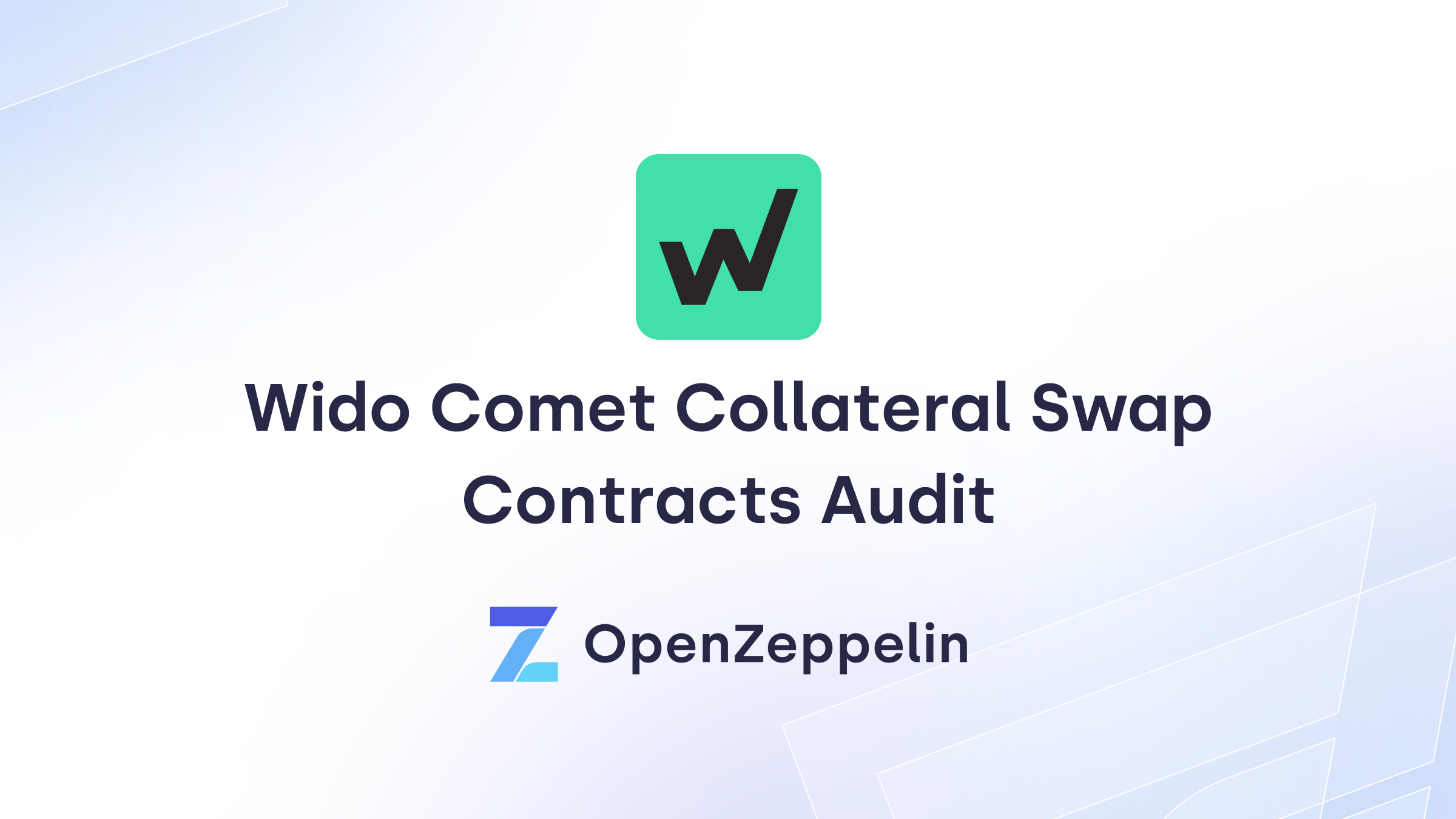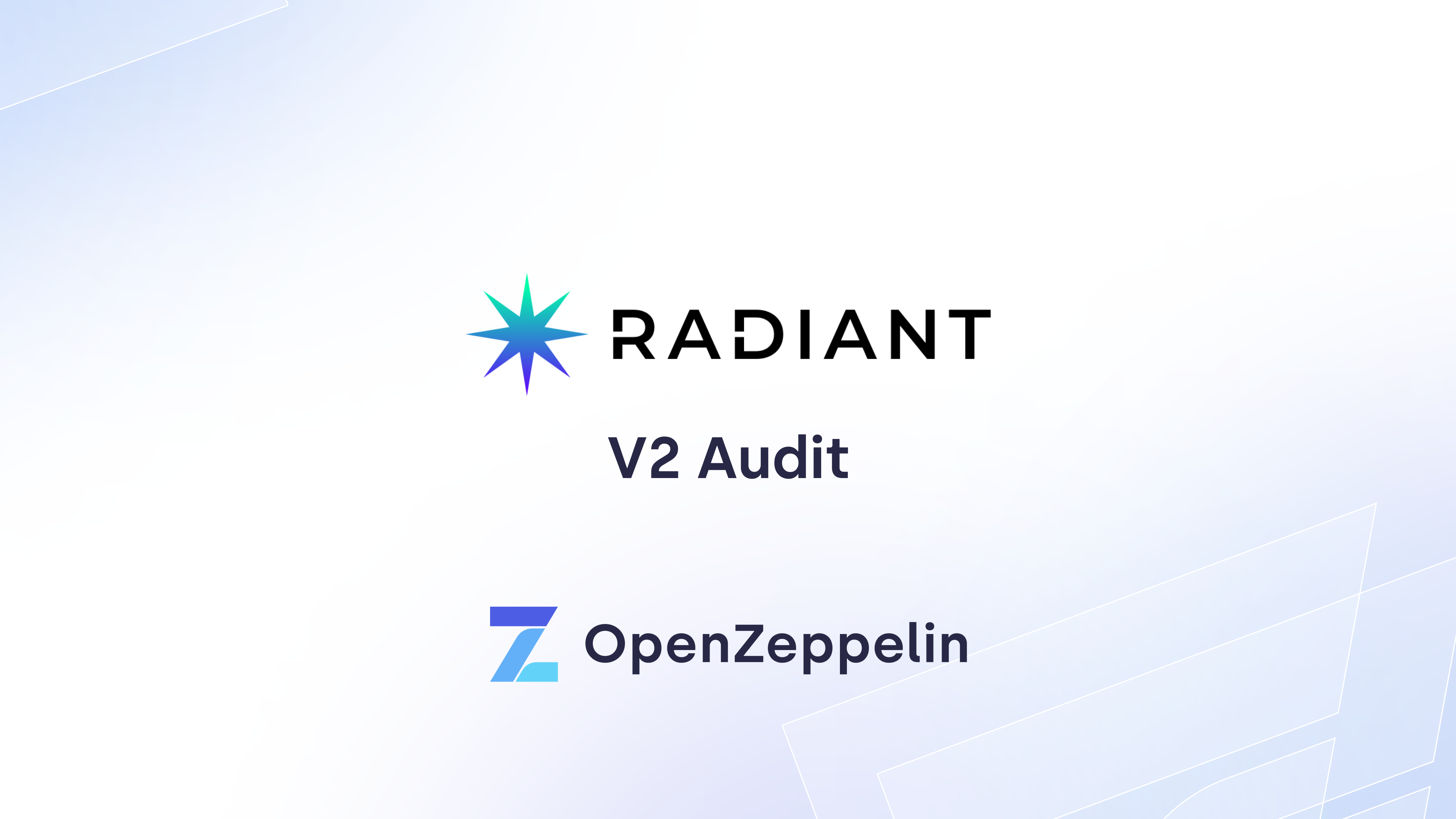Compound Finance is a protocol, currently deployed on the Ethereum network, for automatic, permissionless loans of Ether and various ERC20 tokens. It is one of the most widely used decentralized finance systems in the ecosystem.
Audit history and current scope
We originally audited a subset of Compound’s contracts at commit f385d71983ae5c5799faae9b2dfea43e5cf75262 of their public repo. We then audited a patch that introduced a time delay for critical admin functions and pauseability to some other functions. That patch is reflected in commit 681833a557a282fba5441b7d49edb05153bb28ec of Compound’s public repo.
Next, we audited a refactor of the core CToken contract whose purpose is to accommodate underlying tokens that may extract a fee when transferring tokens (e.g., USDT). This refactor is presented in commit 2535734126c7c26e9bc452f27f45c5408acff71f of Compound’s private repository.
Then we audited the difference between the code at commit 2535734126c7c26e9bc452f27f45c5408acff71f of Compound’s private repository and commit bcf0bc7b00e289f9b661a0ae934626e018188040 of their public repository. These changes introduced the ability for Compound to handle underlying ERC20 tokens whose implementations can be upgraded (e.g., DAI).
In this audit, we are auditing only the difference between commit bcf0bc7b00e289f9b661a0ae934626e018188040 and commit 9ea64ddd166a78b264ba8006f688880085eeed13 in Compound’s public repository.
In particular, we are auditing all contracts in the contracts/ directory that have been added or changed between the above two commits. These include the changes to the JumpRateModel contract and the two newly added files CDaiDelegate.sol and DAIInterestRateModel.sol.
We did not audit Maker’s contracts.
Here we present only the new issues that we found when auditing this latest difference between commits. Issues found in our previous reports may still apply.
High-level overview of the changes
This code introduces changes to accommodate Multi-collateral DAI and the new DAI Savings Rate contracts. It allows Compound to introduce a new CToken backed by DAI that will allow suppliers of DAI to earn both the DAI Savings Rate (DSR) and interest paid by borrowers of DAI. This is achieved by automatically sweeping all user-supplied DAI into Maker’s DSS contract, so that any DAI in Compound that has not been loaned out to borrowers will be earning the DSR. Income from the DSR is distributed pro-rata to DAI suppliers. This logic is handled by the new CDaiDelegate contract.
The CDaiDelegate contract uses the new DAIInterestRateModel contract to determine the borrow rates and supply rates. The minimum value of the supply rate is equal to the DSR, with the intention being that users will always earn at least as much (non-risk-adjusted) interest by supplying their DAI to Compound as they would by supplying their DAI directly to Maker’s DSS.
Additionally, the new interest rate model ensures that the borrow rate will always be strictly greater than Maker’s stability fee when Compound’s DAI utilization rate (the percentage of Compound’s DAI that has been loaned out) meets or exceeds a value called the kink. The intention here is to ensure that borrowers are better off borrowing DAI directly from Maker whenever the utilization rate is above the kink. This provides some economic pressure on the utilization rate in the hope that it will not grow much larger than kink. Assuming the kink parameter is set prudently, there should always be some DAI in Compound so suppliers can exit.
This analysis assumes:
- An honest/uncompromised and live price oracle.
- For all
CTokencontracts, theCTokenadminis an instance ofTimelock. - The
CTokencomptrolleris an instance ofUnitroller. - The
Unitrolleradminis an instance ofTimelock. - The
UnitrollercomptrollerImplementationis an instance ofComptroller. - The
Comptrolleradminis an instance ofTimelock. - The
ComptrollerpauseGuardianis not an instance ofTimelock. - The
Timelockadminis not an instance ofTimelock. - The Maker contracts are secure, bug free, and work as intended. Note that we did not audit any of Maker’s contracts!
Here we present our findings.
Critical severity
None. 🙂
High severity
None. 🙂
Medium severity
[M01] daiJoin.cage prevents withdrawals
Part of the functionality of the DSS system is the ability of the Maker admins to call the function cage in join.sol, which sets live = 0. If this happens, the call to daiJoin.exit within CDaiDelegate’s doTransferOut function will revert upon reaching the require statement on line 169 of join.sol. Users would not be able to withdraw their funds.
Consider informing users of the risk associated with using Compound’s DAI market. Also consider a course of action for the pauseGuardian and/or admin roles should the DaiJoin contract ever be “caged”.
[M02] Negative DSR causes unexpected reverts
On line 66 of DAIInterestRateModel.sol, 1e27 is subtracted from dsr. If for any reason, dsr is less than 1e27 (which corresponds to a “negative” interest rate), any calls to the dsrPerBlock function will revert. This includes all calls to the poke function and the getSupplyRate function.
While the Maker developers have said they do not have plans to ever allow dsr to be less than 1e27, this could still happen via the Maker governance system.
Reverting on poke could prevent updating the baseRatePerBlock and multiplierPerBlock state variables.
Consider modifying dsrPerBlock such that it returns 0 when dsr < 1e27 (corresponding to a DSR of 0%). Also consider implementing a mechanism to remove DAI from the DSR contract, and to stop deposits into the DSR contract, just in case dsr is ever made less than 1e27.
[M03] Unnecessary calls to drip function of pot contract
When rho == now, pot.drip is a gas-intensive no-op. This means every call to the CDaiDelegate accrueInterest function (within a given Ethereum block and after pot.drip has been called) calls pot.drip unnecessarily. Consider wrapping line 103 of CDaiDelegate.sol in an if (PotLike(potAddress).rho() != now) { ... } statement. This could provide gas savings (on average) when cDai and/or the DSR is getting a lot of use. See this GitHub issue for more information.
Low severity
None. 🙂
Notes
[N01] Negligible error in getCashPrior function
As noted in the code comments of the CDaiDelegate contract’s doTransferIn function, there can be a small amount of “dust” DAI — in the rage of [0, chi) — left in the Vat contract after the call to doTransferIn. This is not taken into consideration in the CDaiDelegate contract’s getCashPrior function. That is, the return value of the getCashPrior function could be off by up to chi / 1e27. This error is negligible and should have no meaningful effect on the economics of Compound. However, developers of other projects interfacing with Compound contracts should be aware that if chi >= 1e27 then the getCashPrior function may not return the exact value they expect. For example, they should avoid using strict equality checks with the output of getCashPrior and the input parameter amount in doTransferIn.
If reducing this error is important, consider adding the balance of vat.dai(address(this)) to the value mul(pot.chi(), pie) before dividing by RAY on line 119 of CDaiDelegate.
[N02] Superfluous return
The return at the beginning of line 34 of CDaiDelegate.sol is not needed. This doesn’t cause any problems but may confuse readers. To improve readability, consider removing return from the beginning of the line calling _becomeImplementation(daiJoinAddress_, potAddress_);.
[N03] Superfluous functions in GemLike abstract contract
The GemLike abstract contract in CDaiDelegate.sol includes the two undefined functions deposit and withdraw. However, the only contract that is ever cast as GemLike is the dai contract, which does not implement a deposit or withdraw function.
If this is not intentional, consider removing the deposit and withdraw functions from the GemLike abstract contract to improve readability.
[N04] Supply rate can exceed borrow rate
Unlike previous interest rate models, it is possible for the supply rate to be greater than the borrow rate with the new DAIInterestRateModel contract. This can happen when the reserves grow large enough.
Reserves earn interest via the DSR and that interest is given to suppliers (which increases the supply rate). But utilization rate is effectively independent of reserves, and thus they don’t have any effect on the borrow rate. With enough reserves, the supply rate can become greater than the borrow rate.
When this occurs, users are incentivized to arbitrage the rates — borrowing DAI from Compound and immediately re-supplying it back into Compound to earn a net-positive interest rate. This may be unintended behavior but is not a serious problem. As users arbitrage the rates, the utilization rate (and thus the borrow rate) increases until the supply rate is no longer greater than the borrow rate.
This seemingly “free money” would actually be coming from the DSR interest earned by the reserves. It would not come at a loss for any Compound users. We note this behavior only because it is a possibility that did not exist with previous interest rate models, and may be unintended. If this behavior is undesirable, then consider reducing the reserves whenever the supply rate approaches the borrow rate.
[N05] Typos
- On line 144 of
CDaiDelegate.sol, “th” should say “the”. - On line 44 of
DAIInterestRateModel.sol, “amnount” should say “amount”. - On line 66 of
DAIInterestRateModel.sol, “subraction” should be “subtraction”.
[N06] Misleading code comments
- On line 15 of the
DAIInterestRateModelcontract, the comment suggests thatgapPerBlockis set to correspond to a rate of0.05%per block. However, the code on line 17 setsgapPerBlockto correspond to a rate of0.05%per year. Consider adjusting the comment to reflect the actual value ofgapPerBlock. -
On line 81 of the
DAIInterestRateModelcontract, the comment states that the max borrow rate is determined and set by the code below. However, the code below does not set the maximum borrow rate, but rather the borrow rate when utilization rate equalskink. Consider changing the comment to reflect this.
[N07] Inconsistent capitalization
CDaiDelegate and DAIInterestRateModel both exist. To match the capitalization on both, consider changing DAIInterestRateModel to DaiInterestRateModel.
[N08] doTransferOut function may fail in an edge case
On line 163 of the CDaiDelegate contract’s doTransferOut function a 1 is added when computing pie. This ensures that enough internal DAI will be taken from the Pot contract and given to the CToken contract that the call to daiJoin.exit on line 166 will succeed.
However, in the edge case where the CToken contract has no reserves and the last existing user attempts to withdraw their entire balance (e.g., via a call to redeem), the call to doTransferOut could unexpectedly revert at line 164 as the CToken’s call to pot.exit may try to subtract a value greater than the pot contract’s pie[msg.sender].
This is not a serious problem, even for CToken users that are contracts (which may be hard coded to only be able to redeem their entire balances at once). Since anyone can add reserves, they can always be sure there is enough internal DAI associated with the CDaiDelegate contract for this call to complete.
Consider making sure there is always at least a small amount (dust) of internal DAI in the reserves.
Conclusion
No critical or high severity issues were found. Recommendations were made to improve readability and handle cases where decisions by the Maker governance system may impact Compound users.


